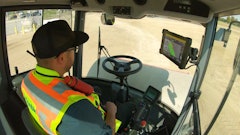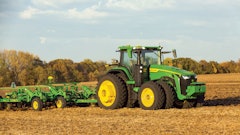
Cat Production Measurement for Medium Wheel Loaders is an in-cab system that allows loader operators to confidently and consistently place exact loads on trucks, eliminating both guesswork at the stockpile and time-wasting returns to the loading area for trucks too heavy or too light at the scale. The system’s integrated, multi-function, touchscreen display provides immediate information for operators, allowing adjustment of final-pass loads both at the pile or at the truck. Used in conjunction with Cat Connect LINK technologies, machine owners can access production information online through the Cat VisionLink interface, or can receive more detailed reports via the VIMS software.
Cat Production Measurement calculates payload weight by using data from sensors that measure bucket position and hydraulic pressure in the lift circuit. Payloads are weighed as the bucket rises, causing no interruption in the loading cycle and contributing to efficient production. Because operators can track load weights in real time through the display and constantly know the exact weight of material in the bucket, truck or hopper, target payload weights are consistently attained.
Features built into Cat Production Measurement further assist the operator and speed the loading cycle. The system’s Transfer-On-Weigh mode adds the weight of each bucket payload to the truck’s total payload as soon as the bucket is weighed, not after the load has been dumped into the truck. This capability provides the operator a preview of material weight and the opportunity to tip off material if the load is too heavy.
The Low-Lift-Weighing mode provides a quick estimate of bucket-payload weight at relatively low bucket heights, not requiring that the bucket be raised throughout the entire weighing range. This feature speeds truck and hopper loading cycles when only an estimated weight is required, such as when tipping off material for topping off the truck with a partial bucket load, or feeding hoppers from a ramp.
For further operator convenience and payload accuracy, Cat Production Measurement provides two Tip-Off modes that allow the operator to quickly adjust payload weight. With Tip-Off at Pile, the last bucket load for the final pass, the operator can dump some material from the bucket and view payload weight in real-time; eliminating the need to lower the bucket and re-weigh after making the adjustment. Similarly, Tip-Off at Truck is especially helpful when sequential trucks use the same material—or when distributing loads evenly between the axles.
Intuitive user interface
Cat Production Measurement is integrated into the loader’s standard multifunction touchscreen display, located within easy reach of the operator’s fingertips and viewable at a glance. No additional display is required giving the operator a full view of the work area with no additional cab clutter. The graphical user interface is easy to use and navigate; and even works while wearing gloves.
The Auto Material mode and Truck ID mode can be enabled or disabled together or separately, and when enabled, remind operators to make selections from pop-up screens of predefined lists stored in memory. Lists have a default capacity of 10 items each, but can be increased to include 50 trucks and 20 materials.
Payload data for the selected truck and material just loaded is recorded when the “store” button is pushed, and data can include: customer identification, truck type and model, target weight and material type/grade. The information can be printed on payload tickets in the cab with the optional printer or for office reports. Tickets also give truck/material summaries for daily recordkeeping.
Calibration, accuracy, automated loading
Cat Production Measurement features two calibration modes—Full Calibration and Simple Calibration. Performing a Full Calibration requires only eight bucket lifts (four loaded and four empty), and the system automatically controls velocity. On-screen instructions guide the technician through the process, which can be done in as little as one or two hours.
The Simple Calibration mode allows the operator to “fine-tune” settings to adjust for small differences between the measured payload weight and the scale-house weight. The Simple Calibration can use a single scale-house weight for reference, although four or five weights are recommended, and as many as 15 weights can be used.
Cat Production Measurement has been tested extensively in the field and is proving to consistently deliver world-class payload accuracy in line with those of leading aftermarket scale suppliers.
An available Aggregate Autodig feature allows automated control of the machine’s loading cycle when working from aggregate stockpiles, thus relieving the operator of this repetitive task. The operator records a personal loading cycle, which the system then duplicates. A dig-mode selector allows adjusting for material density, an Automatic Pile Detection feature initiates bucket loading when material is contacted, and the Operator Triggered feature allows the operator to initiate loading with a switch.
Safety, productivity/efficiency monitoring
The in-cab monitor for Cat Production Measurement also serves as the display for the standard rearview camera, displaying the camera image when the machine reverses, but also continuing to present critical payload information. An optional additional display provides a full-time view of the work area behind the machine to further enhance the operator’s jobsite awareness.
Two resettable Trip Totals screens let the operator track production by shift, day, week, etc. A resettable materials totals screen let the operator track production by material type.
The VisionLink telematics user interface, allows machine owners to quickly access summary data for production tonnage (for individual loaders or cumulative fleet totals) and loader production comparisons that include cycle counts, productivity (tons/hour or tons/cycle), and efficiency (tons/unit of fuel). These comprehensive reporting features assist managers in evaluating fleet performance for improving loading efficiency, operator proficiency and daily production.




![Hd Hyundai Xite Transformation Booth Image[1]](https://img.oemoffhighway.com/files/base/acbm/ooh/image/2023/12/HD_Hyundai_Xite_Transformation_Booth_Image_1_.657a32d4218f2.png?auto=format%2Ccompress&fit=crop&h=135&q=70&rect=113%2C0%2C1600%2C900&w=240)



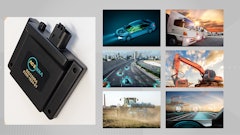


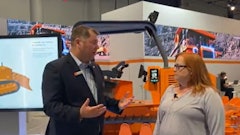


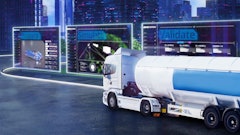

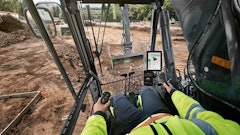


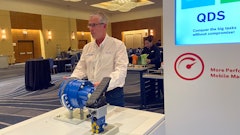
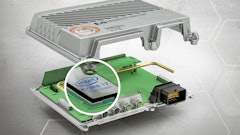
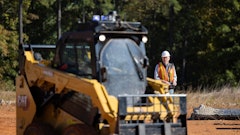

![Charlotte Ebus 2e[20]](https://img.oemoffhighway.com/files/base/acbm/ooh/image/2022/01/Charlotte_Ebus_2e_20_.61f3068676a88.png?auto=format%2Ccompress&fit=crop&h=135&q=70&rect=0%2C231%2C1920%2C1080&w=240)
